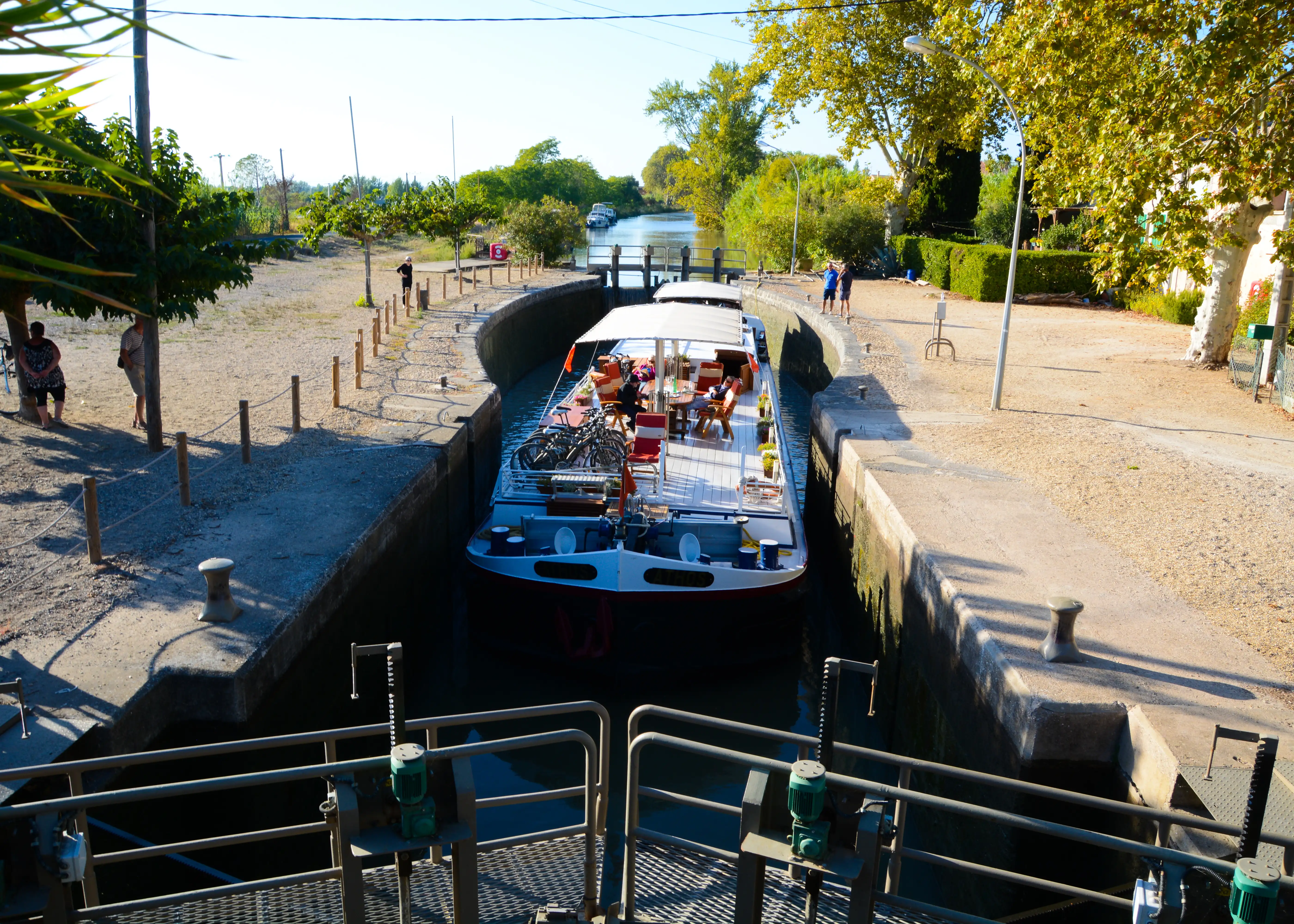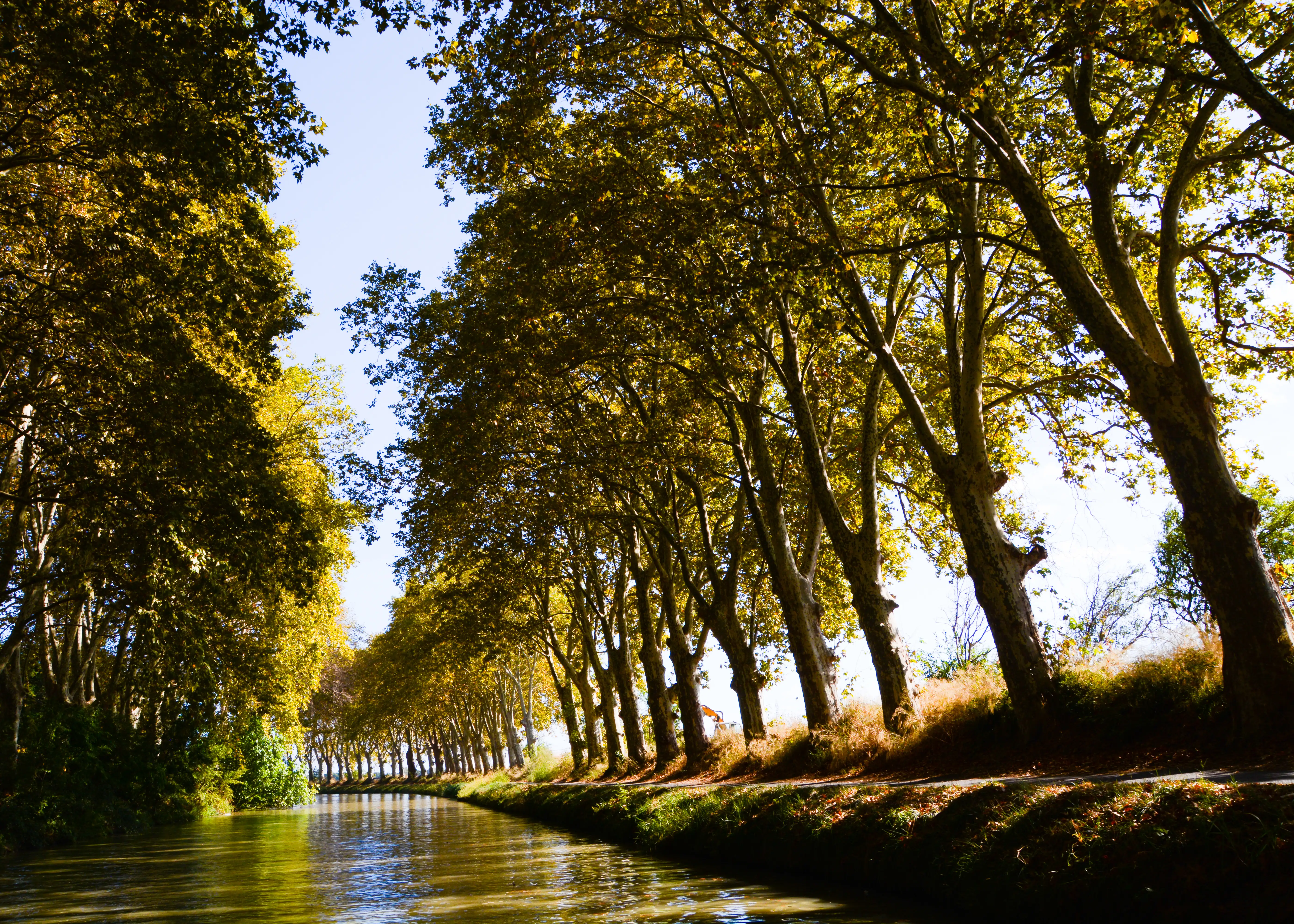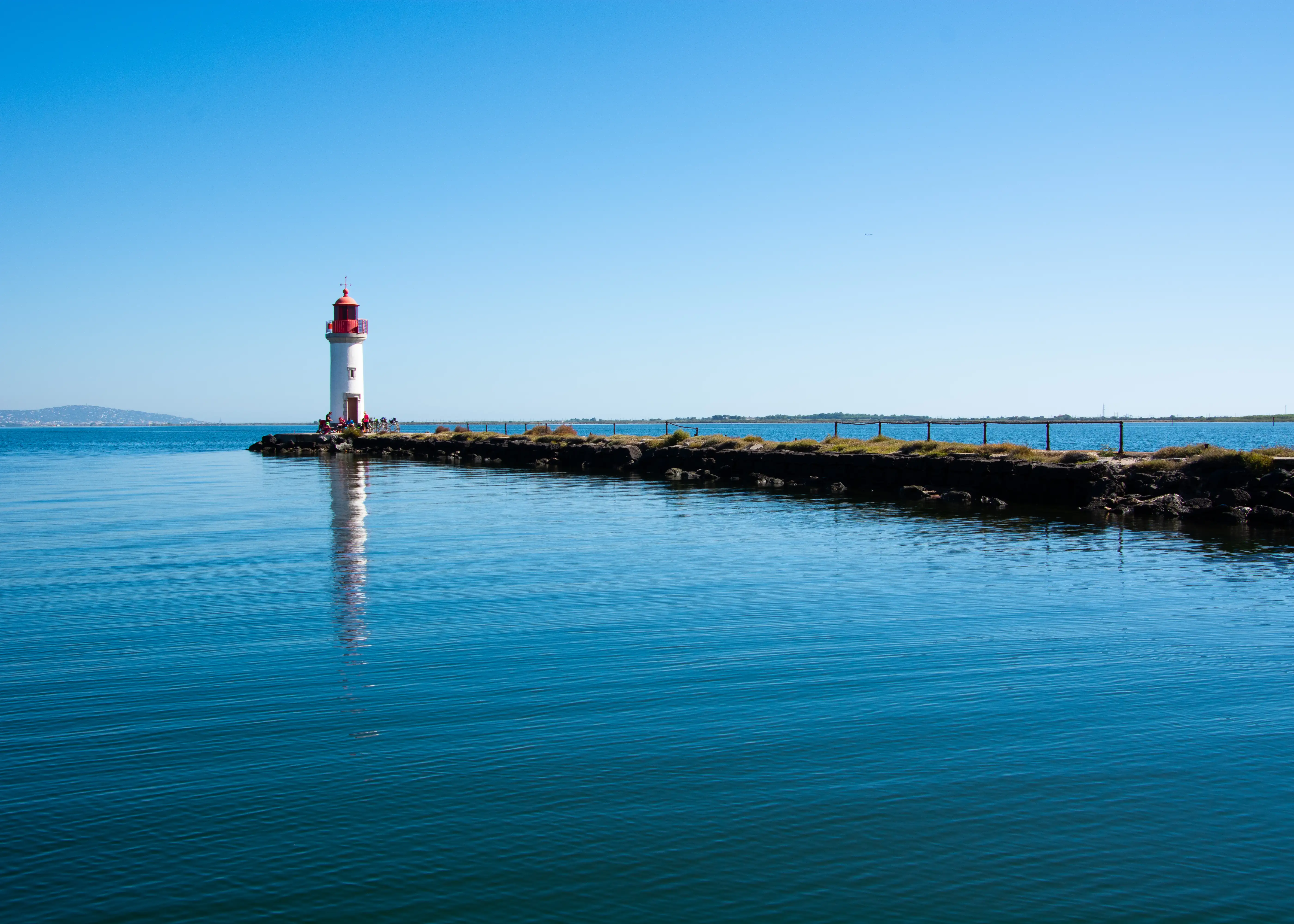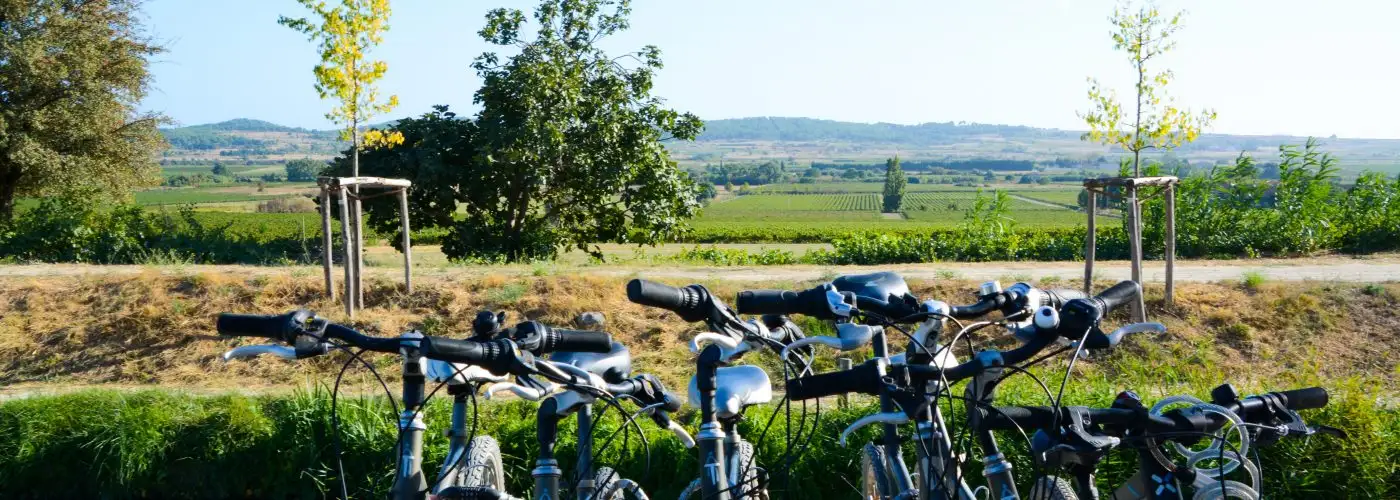Aboard the Athos, the scenic countryside of the French Languedoc rolls by like a never-ending Bob Ross painting. There are ten of us on the deck of this leisure barge, finishing our lunch as we cruise down the Canal du Midi, through the vineyard-rich landscape of the southern countryside. The barge follows the canal’s winding path under stone bridges and tree canopies.
The Athos is my hotel and vessel during this late September trip down the Canal du Midi. Thirty meters long and crowned with a large dining table and ten bicycles on long flat deck lined with flower boxes, it’s the largest barge on the canal. There is room enough for twelve guests plus a crew of five, which includes our captain, a tour guide, two hostesses, and a chef. Occasionally, the captain’s dog joins us on board, keeping watch for squirrels at the bow of the barge.
As others pass on barges and rental boats, we exchange lazy waves and polite smiles. On either side of the canal, bicycles speed by us by without effort. On the canal, there is no need to rush. Everyone, apart from some of the cyclists, has come for the same thing—to perfect the art of moving very slowly. Welcome to barge cruising.
Click on the image below to view the interactive version of this story.

What is a Barge Cruise?

Although originally built to transport crops and goods between landlocked cities, European canal systems are mostly used today for tourism. Taking the canal route through rural valleys is a slow-and-steady way to acquaint yourself with the countryside. Locals often opt to rent and drive their own boats, but for those who prefer to let someone else drive, barge cruising is an ideal choice.
The concept of a barge cruise–in which leisure-seekers meander down a forgotten waterway on a boat-turned-hotel—began in the 1960s as a cheap way to see the French countryside. Back then, the barges were a far cry from the luxurious floating hotels they are today. Passengers slept in bunk beds, the chef served food through a hatch in the wall, and flushing toilets were not guaranteed. Yet, it became an extremely popular way to travel, spreading to canals throughout mainland Europe and even as far north as Scotland and Ireland.
Today, barge cruising is much more luxurious, but has become less known. Way off the radar of most bucket-list-motivated travelers, barge cruises embrace the countryside, opting for rural towns and small villages rather than big cities and famous sights. I spent a week traveling down the Canal du Midi and in that whole time, I only traveled about sixty miles. If I were in a car, it would have only taken an hour to drive the same distance.
During our week along the Canal du Midi, the itinerary included visits to medieval cities, local markets, and even a tasting at a local olive oil press. Each day brought a new place to visit, as Matthieu, our charismatic tour guide, described the layered history of the region—from the Roman legions to the medieval crusaders.
The Canal du Midi

The most historic canal in France, the Canal du Midi was built during the era of Versailles under Louis XIV by Pierre-Paul Riquet, a tax collector in the Languedoc region. A symbol of French prestige that was designed to connect the city of Toulouse to the Mediterranean, the canal was built by 12,000 workers with nothing but shovels. It took fourteen years to dig the 150-mile-long canal, commonly acknowledged as a marvel of 17th century engineering.
During our excursions, Matthieu shared the stories of the region and the cities that thrived along the canal. We explored Carcassonne, a medieval fortress with Roman origins; Narbonne, famous for its covered market; and Marseillan, the seaside home distillery of Noilly-Prat, one of the world’s most recognized brands of vermouth. These excursions were sometimes within walking distance of the canal and other times required the assistance of the barge’s vans, which shadowed the barge along its canal route throughout the cruise.
One of the highlights of traveling along the Canal du Midi is traveling through the locks, the mechanical devices that are used to raise and lower boats along the canal whenever there is a shift in elevation. The first set of locks we passed through were the most famous: the Fonserannes Locks or, as they are commonly referred to, “the staircase of locks.” A series of six, oval-shaped locks, the staircase spans almost a thousand feet and is as historic as the canal. Virtually unchanged since the initial construction, apart from the mechanical gates installed by the Germans during World War II, the Fonserannes Locks are a local landmark. Nearby residents visiting the locks during an afternoon stroll all stopped to watch the Athos, the largest boat on the canal, just barely fit into each lock. As we traversed the staircase of locks while eating our lunch on deck, our tour guide Matthieu detailed the process to us step-by-step, negotiating in animated French with the lockkeeper, who operated the gates during our journey, and the captain, who delicately navigated the boat between the locks. I was transfixed by the mechanical ingenuity of the gates, and, after experiencing the Fonserannes Locks, made a point to always be on deck as we passed through the canal’s locks.
At the Journey’s End

On the last day of the cruise, the Athos emerged on the Etang de Thau, a vast lake located between the canal and the Mediterranean near the city of Sete. Surrounded by small villages and oyster farms, we ate our final lunch adrift in the second largest lake in France. Our hostess fills our glasses with Mire L’Etang, a wine with a name that translates to “in sight of the pond.” True to my wine, wherever I turned my head, I was in sight of the pond.
Barge cruising might be one of the slowest ways to get around, but the Canal du Midi is a destination that is best appreciated when observed in slow motion. What I’ll remember most is watching the countryside roll by; not in a blur, but in vivid detail, almost as if it were one of those dreams you have when you’re half awake, the kind you get when you fall asleep in the sun.
More from SmarterTravel:
- 10 Emerging Places to Visit in Europe for a Crowd-Free Vacation
- Following the Samurai: Hiking the Nakasendo Way in Japan
- 10 Things to Know About Hurtigruten, Norway’s Expedition Cruise Line
Jamie Ditaranto visited the Canal du Midi aboard the Athos courtesy of Barge Lady Cruises. Follow her on Instagram at @jamieditaranto.
We hand-pick everything we recommend and select items through testing and reviews. Some products are sent to us free of charge with no incentive to offer a favorable review. We offer our unbiased opinions and do not accept compensation to review products. All items are in stock and prices are accurate at the time of publication. If you buy something through our links, we may earn a commission.
Related
Top Fares From
Today's Top Travel Deals
Brought to you by ShermansTravel
Shop and Save with Country Inns...
Patricia Magaña
 Hotel & Lodging Deals
Hotel & Lodging Deals
$229 -- Chicago: Discounted Rates and...
Francesca Miele
 Hotel & Lodging Deals
$229+
Hotel & Lodging Deals
$229+
$188 -- Honolulu: Save on Oceanview...
Abigail Lamay
 Hotel & Lodging Deals
$188+
Hotel & Lodging Deals
$188+




